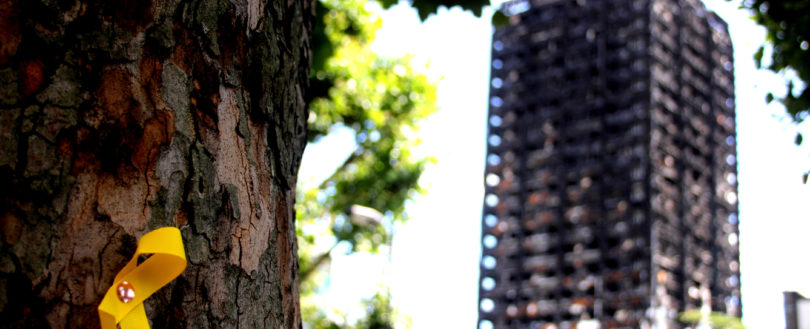
Firms fully reject the notion that they are responsible for Grenfell Tower Fire.
Like it? Share it!
28 January 2020
As expected on Monday 25th January the second phase of the Grenfell Tower fire enquiry continued in spite of the resignation. Although, it can be assumed that Arconic, the provider of cladding for the Grenfell Tower will certainly not be content with the first day of findings. The second phase of the inquiry found that the cladding provided was “not suitable for use on building facades”. Arconic and “its representative was pleased when its product was selected”, despite the fact that they knew their cladding panels were “unsuitable for use on building facades”. This was confirmed by internal emails in June and July 2011, some 3 years before they were fitted onto Grenfell Tower.
Furthermore, ‘In 2015 Wehrle said in another email that Arconic’s Reynobond panels filled with combustible polyethylene were “dangerous on facades and everything should be transferred to fire retardant as a matter of urgency”. Wehrle added that he recognised his opinion was “technical and anti-commercial”.’
Phase two of the inquiry also heard that Celotex, the provider of combustible insulation which went behind the cladding panels, were concerned with how their products would react in the case of a fire. One Celotex official emailed colleagues in 2013: “Do we take the view that our product realistically shouldn’t be used behind most cladding because in the event of a fire it would burn?”
Rydon, the main contractor on the project, suggested that ‘the architects, cladding subcontractor, fire engineer, building control or the landlord were involved in drawing up the specification, but none said that “using Reynobond PE or Celotex RS5000, either individually or together, posed a risk to the health and safety of the occupants of Grenfell Tower”’. Rydon claimed that moral culpability and civil liability must be considered in relation to how multiple parties met their own specific contractual obligations.
‘Richard Millett QC, the inquiry's chief lawyer, said each firm claimed what happened was someone else's fault’. However, the Royal Borough of Kensington and Chelsea accepted that the refurbishment work should not have been signed off but the Borough suggested that all organisations had denied responsibility in "carefully crafted statements".
It can be seen that in phase one of the inquiry ascertained that Arconic cladding was primarily responsible for the spread of the fire. Phase two has set out that Arconic was aware of the problems with their product. The rest of the inquiry will seek to assess what involvement the UK Government had in this tragedy and further seek to untangle and decipher the crafted statements that the other firms are currently presenting.
Related training
Related news
Related resources
-
Euralarm-FAQs-re-Environmental-Product-Declarations-EPDs.pdf 1
27 November 2025
-
Fire Risk Assessors Standard Scope of Services
07 August 2025
